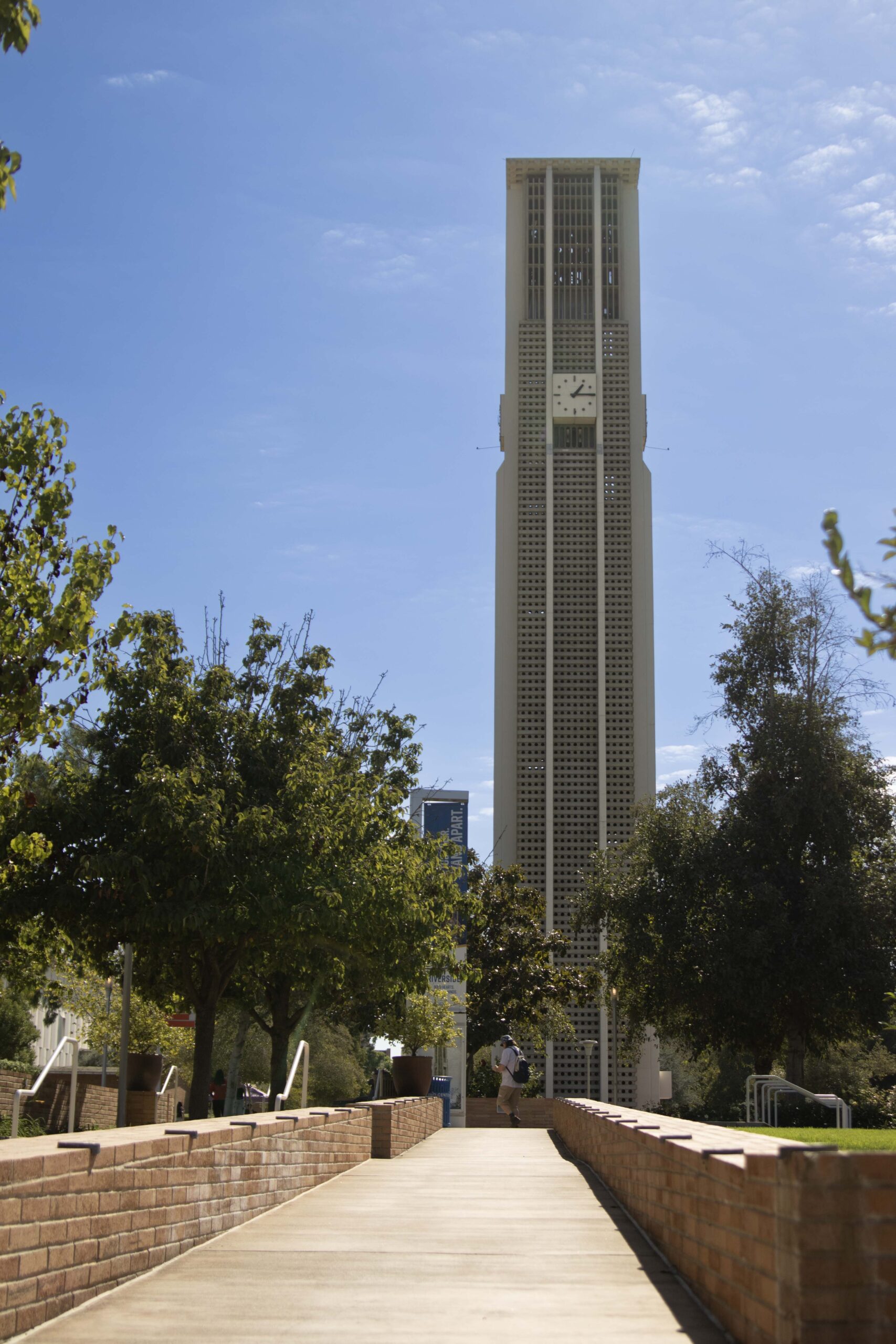“We’ve got a bell tower. So what else is nu? Personally, I don’t mind having it in the neighborhood. I just wouldn’t want my sister to marry one.” – Larry Peitzman, 1966
A pinnacle of UCR’s cultural development, the monolithic structure of the UCR Bell Tower has long presided as both the symbolic and literal center of campus. Since 1966, This carillon tower has persistently remained headstrong in every panorama of UCR — a cornucopia of student activity and culture. Its chimes triumphantly represent a prestige that UCR has come to flaunt; to imagine our school without the Bell Tower is to imagine a different school.
With this immense cultural respect, the abundance of extremely critical perspectives at its construction came to me as quite a surprise. Analyzing 1966’s Highlander Volume 24, which covers the period leading up to and following the completion of the structure, it became clear that many students at this time simply hated the Bell Tower. The pieces I chose to highlight in this article were an exchange between several contributors to The Highlander, a three-issue-long argument that illustrates the conflicted reception of the Bell Tower. These fiery pieces serve to give our big Bell Tower a little more character and story.
In 1966, the construction of the Bell Tower was well underway, having begun in 1965. The week of Oct. 19, 1966, the tower was dedicated and opened to the public. Elizabeth Pretzer, a junior at the time, reported that she looked up and had a revelation: a massive, shameful phallus imposed over her, “a disfigurement of the campus,” that cast a shadow of elitism because of the donated money used to build it. With these criticisms, she put forward a petition in The Highlander to tear down the freshly-constructed tower to preserve for UCR “a shread of dignity.”
Outraged by this inflammatory criticism of this new point of campus pride, several contributors submitted rebuttals to Pretzer’s petition during the next week of Oct. 26, 1966. They argued against both the aesthetic and financial criticisms which Pretzer leveled at the Bell Tower. Jane Bennet and Christopher McDermott, both freshmen, argued that the Bell Tower had a definitive beauty, one that inspired them as they walked the campus. To them, the Bell Tower affirmed “an idealistic aspect of man, sensitive to the aesthetic, wanting to experience and perpetuate the intangibles.” They saw this Bell Tower not as an educational investment, but an aesthetic one; thus they described the great abstract value this monument brought to the campus.
Similarly, in the same issue, Richard Francavigalia, a professor, describes an inherent value in the imposition of the building, with its constant reminder of the institution driving students to pursue greater heights. He contended that Pretzer’s focus on the phallic nature of the Bell Tower diminished its true aesthetic value, the “sexual hang-ups” removing one from its beauty.
Prepping her arguments for a few weeks, Pretzer retorted these claims in the issue published during the week of Nov. 16, 1966. To Bennet and McDermott’s claims she argued that rather than a form of artistic beauty, the tower was rather “purely quantitative,” representing only the veneer of wealth that UCR wished to put forward. In response to Francavigalia, she targets the religious, Catholic nature of his argument, accusing him of desiring a return to the connection of religious isolation and academia. Furthermore, she argues that if Francavigalia truly had this sentiment, the Bell Tower should remain standing, so that she could take the issue to the Supreme Court.
The claims pushed by all parties in these early moments of the Bell Tower’s history are all obviously far more inflamed and reactionary than we are now in our attitude towards the structure. Although our carillon may be a bit phallic and potentially a little bit wasteful, it is also a beautiful monument that keeps UCR students inspired with its gorgeous suggestive silhouette.








